With the amazing Orbea Rise M10 diet electric mountainbike, Orbea has taken the low fat e-MTB principle and run with it.
Editors’ Choice 2021
This product features in our Singletrackworld Editors’ Choice 2021 round-up.
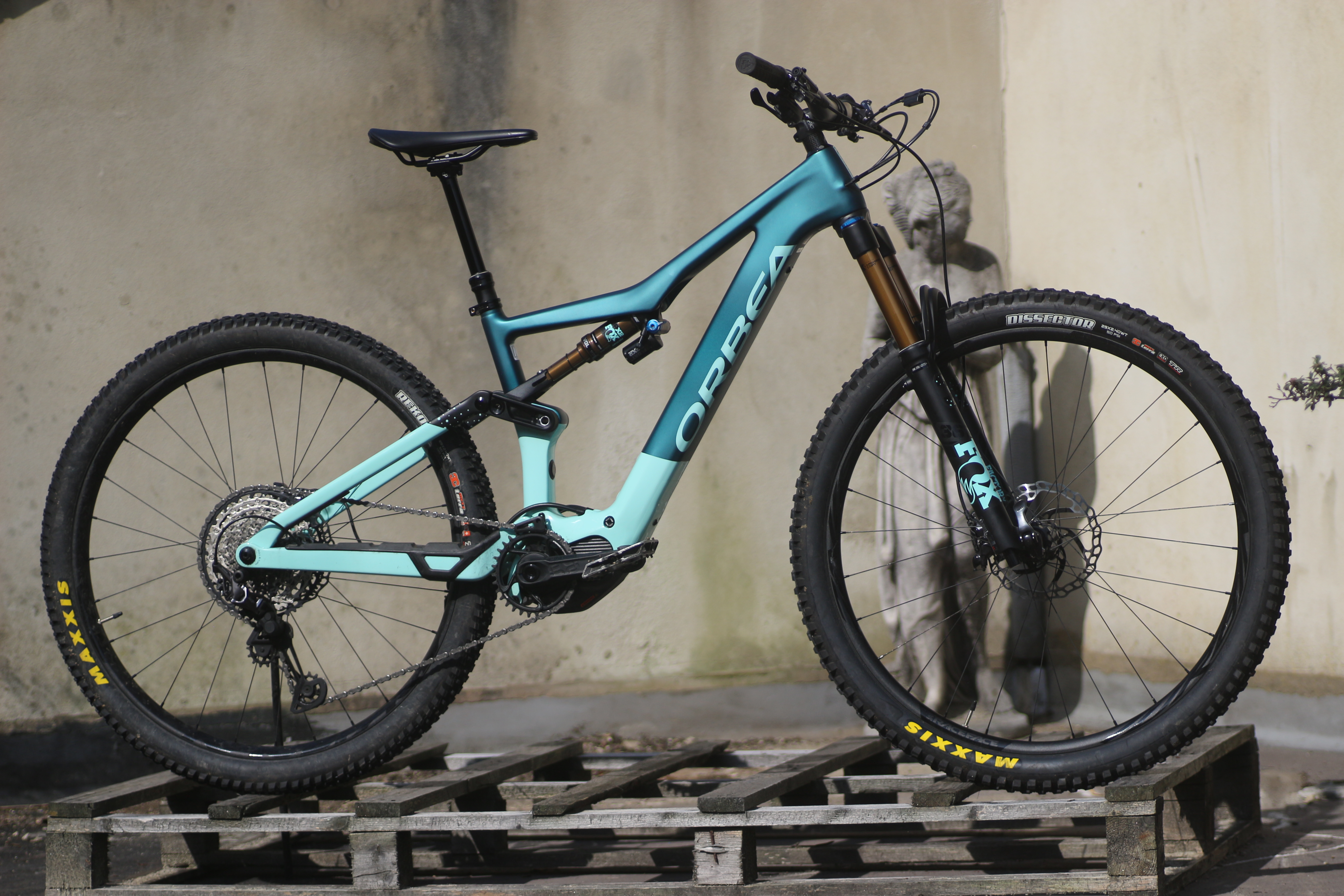
Orbea Rise M10 review
‘Less is more’ is the mantra behind the Orbea Rise and it’s in the low fat category. Less battery power means less weight and less weight means an e-MTB that handles more like an ‘acoustic’ bike. It’s not a new concept – first on the scene was Focus with its Jam2 e-MTB several years ago that featured a full power Bosch motor but with a smaller 375Wh battery on board. Then Specialized stepped up with the Levo SL – a bike with not only a smaller 325Wh battery, but also a much smaller 35Nm motor to save even more mass. The Fazua 250Wh battery and integrated motor has also been around for a while and Lapierre has dabbled with an FS bike with that at its heart, and Focus briefly made a super light version of the Raven hardtail with it as a proof of concept. Now we have the Orbea Rise to add to this breed of low-fat e-MTBs that require slightly more input from the rider with the goal of a more natural feeling ride.
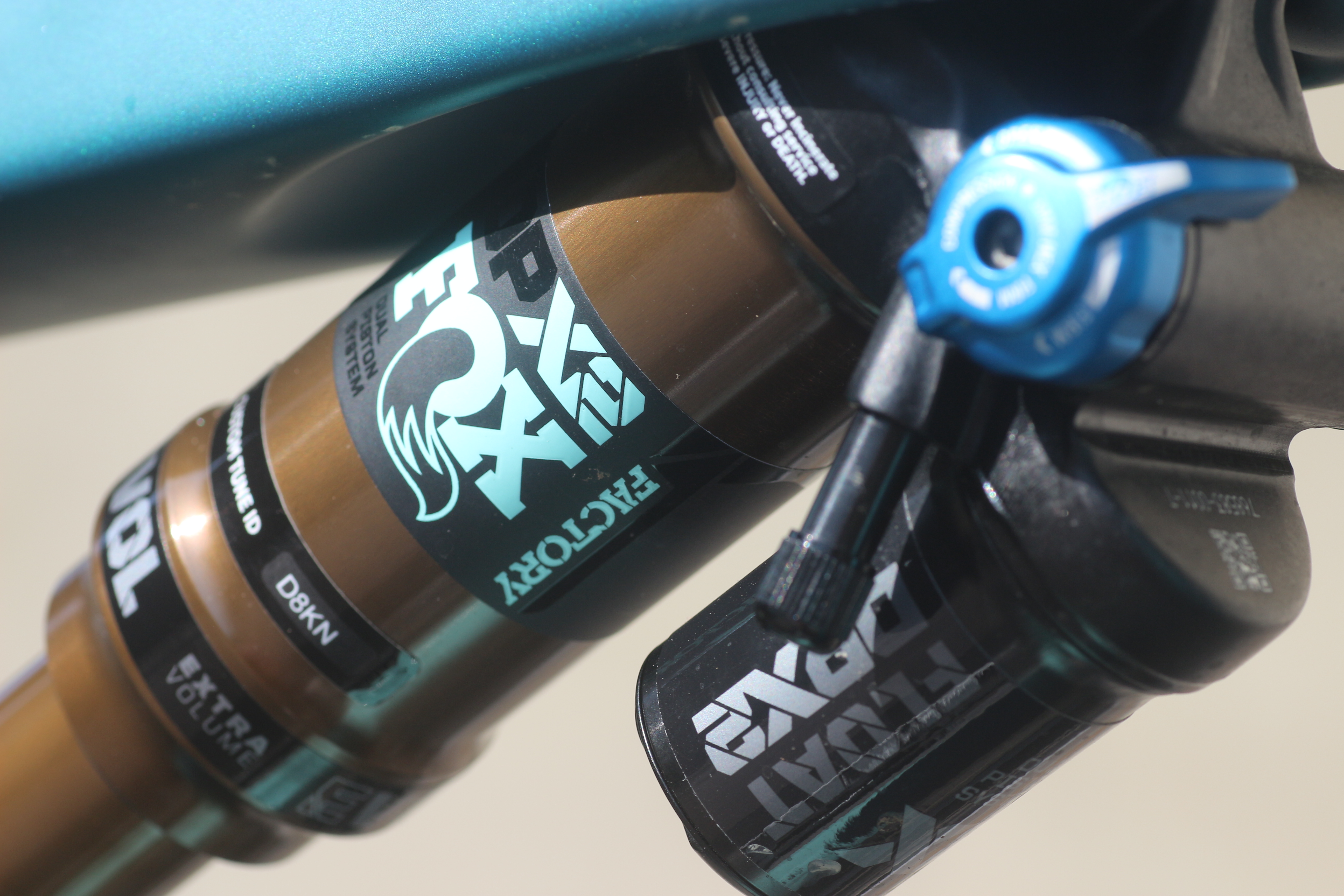
The Bike
The Orbea Rise M10 model is the lowest spec of the three Rise options, which are the M-Team and M-Ltd at the top at £8,999. Despite its upgraded siblings, the M10 still comes with an impressive set of components. Most prominent are the top of the line Factory 36 Kashima fork and DPX2 Kashima shock. The rest of the kit is mostly Shimano XT and Race Face – none of that screams bottom of the pile and it stacks up very well at just £249 more expensive than its equivalent Specialized Comp Carbon Levo SL at £6,750. That model comes specced with Fox Rhythm 36 fork and shock (34 fork on the 2021 model) and SRAM NX groupset with basic Guide brakes.
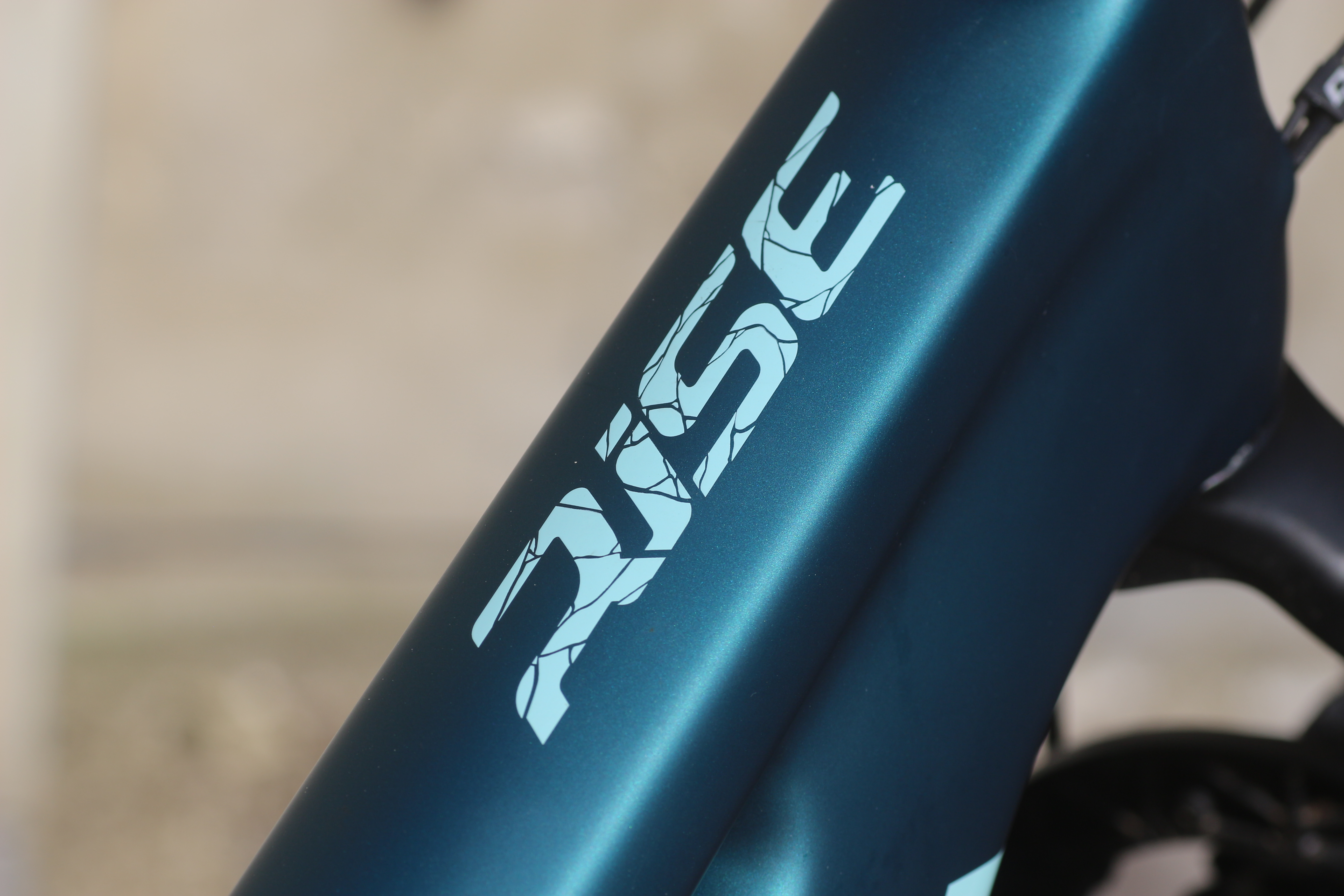
Unlike the Levo/Kenevo SL, the Rise comes with a Shimano EP8 motor, usually found on full fat e-MTBs, only this one has the suffix ‘RS’ to hint that there’s something different going on. The standard EP8 can kick out up 85Nm of torque and 500W of peak power. Its evolution, like that of the Bosch system, has been very rapid over the last few years with each iteration markedly improving on the previous. This RS version is essentially a standard EP8 motor that has been restricted to a maximum of 60Nm of torque. Why do this? Orbea reckons that on a light e-MTB the full power of 85Nm of torque can be really quite hard to control in boost mode and is way too much for a ‘lightweight’ bike. The hypothesis is that the lighter the overall weight of the bike the less need for such high power. In fact, Orbea goes further to suggest that having a lower maximum power output is more efficient in use and maximises the range of the 360Wh battery without sacrificing the performance.
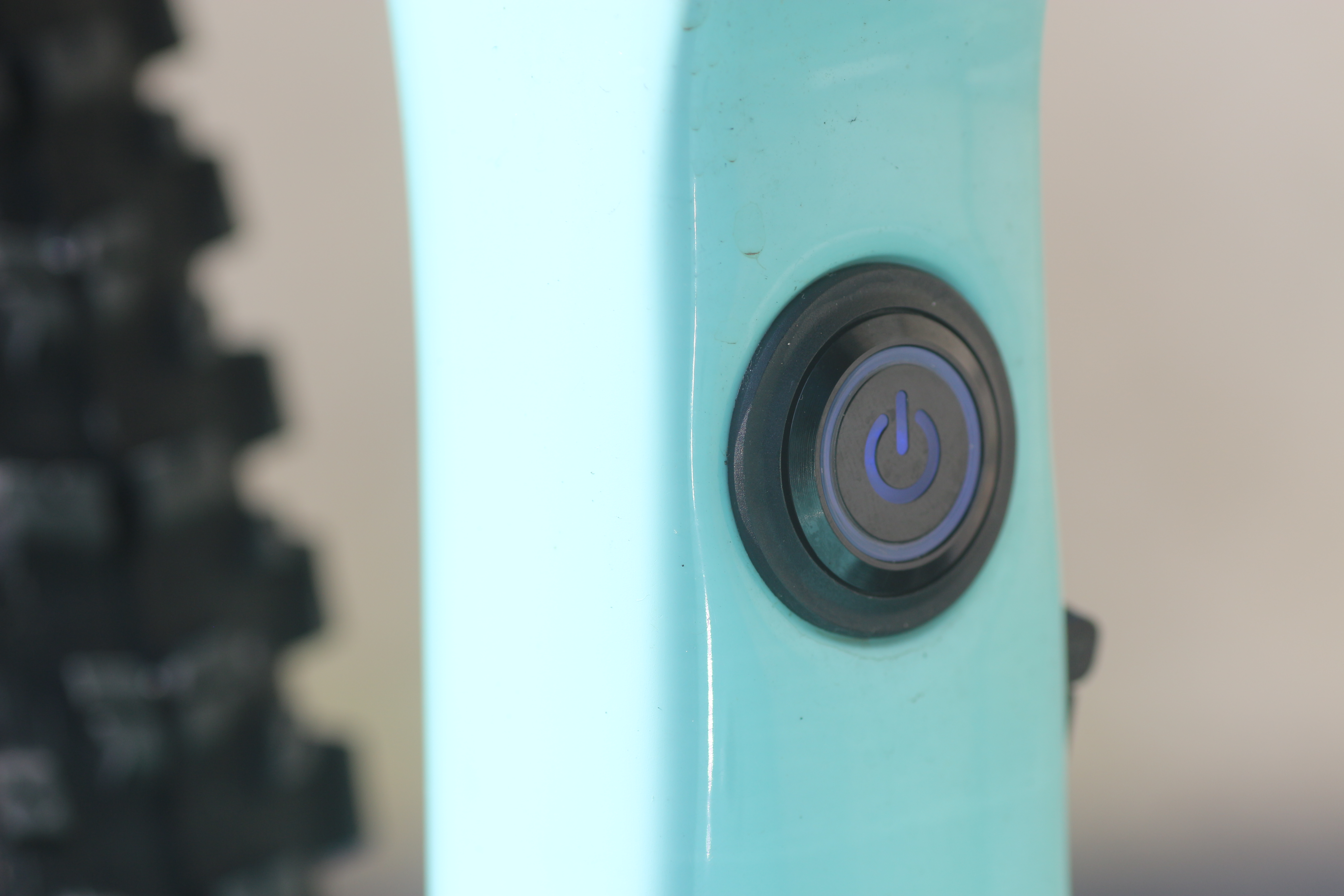
It’s worth pointing out here that even though the EP8 RS is restricted from 85 to 60Nm it is still almost twice as powerful as the Kenevo SL motor at 35Nm. Has it been hobbled? Hardly.
Taking the Specialized trend of minimal cockpit clutter to the extreme the Rise only has a simple twin button controller on the bars to select the power mode. On our model there’s a very simple inline indicator on the actual control cable. It has a simple green light for power on and a single LED that indicates which power mode you are in. There’s no visible indication of your battery capacity, which may seem pretty odd at first. This is because most Orbea orders are made via their website where you can specify all kinds of extras and upgrades. You can change suspension, groupset, etc., to really customise your build, and one of the options is the controller. The system is Bluetooth and ANT+ compatible, which makes it especially compatible with Garmin devices. Our model with literally no battery level indication is meant for riders with Garmin units. All the info you need to see about battery, mode, speed, etc., can be viewed right on your device, which is why it’s an option to have no displays at all on the bike itself. No, Garmin? No problem – you can spec the bike with an optional Di2 Shimano display.
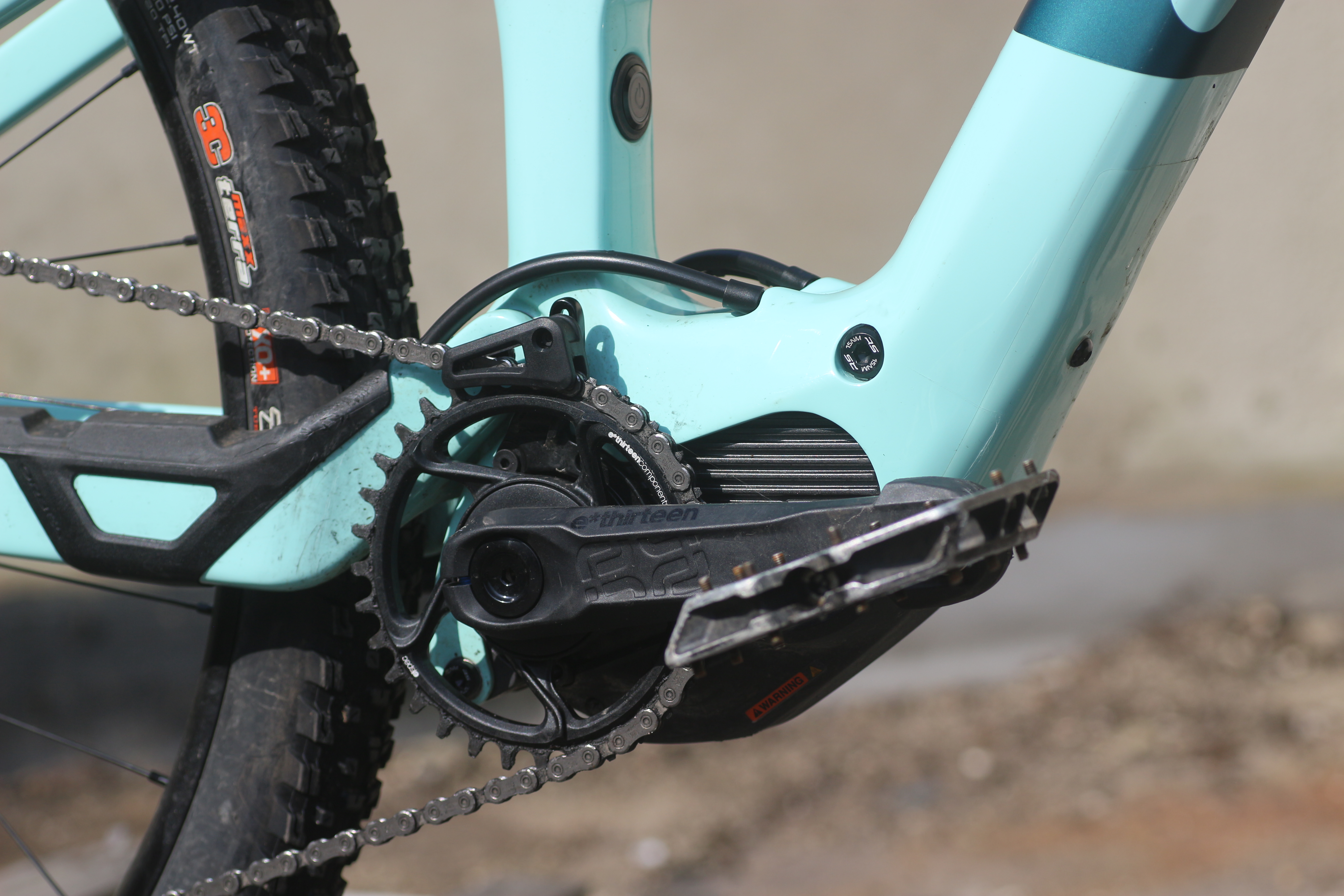
Geometry numbers add up to an all-rounder trail bike. We have non-adjustable angles here of a 65.5° head angle coupled with 76.5° at the seat tube. Not super slack or particularly long at 450mm reach on the medium here, but all quite comfortable and suggestive of a bike meant for long rides through hills rather than lapping the park.
Orbea Rise M10 – The Ride
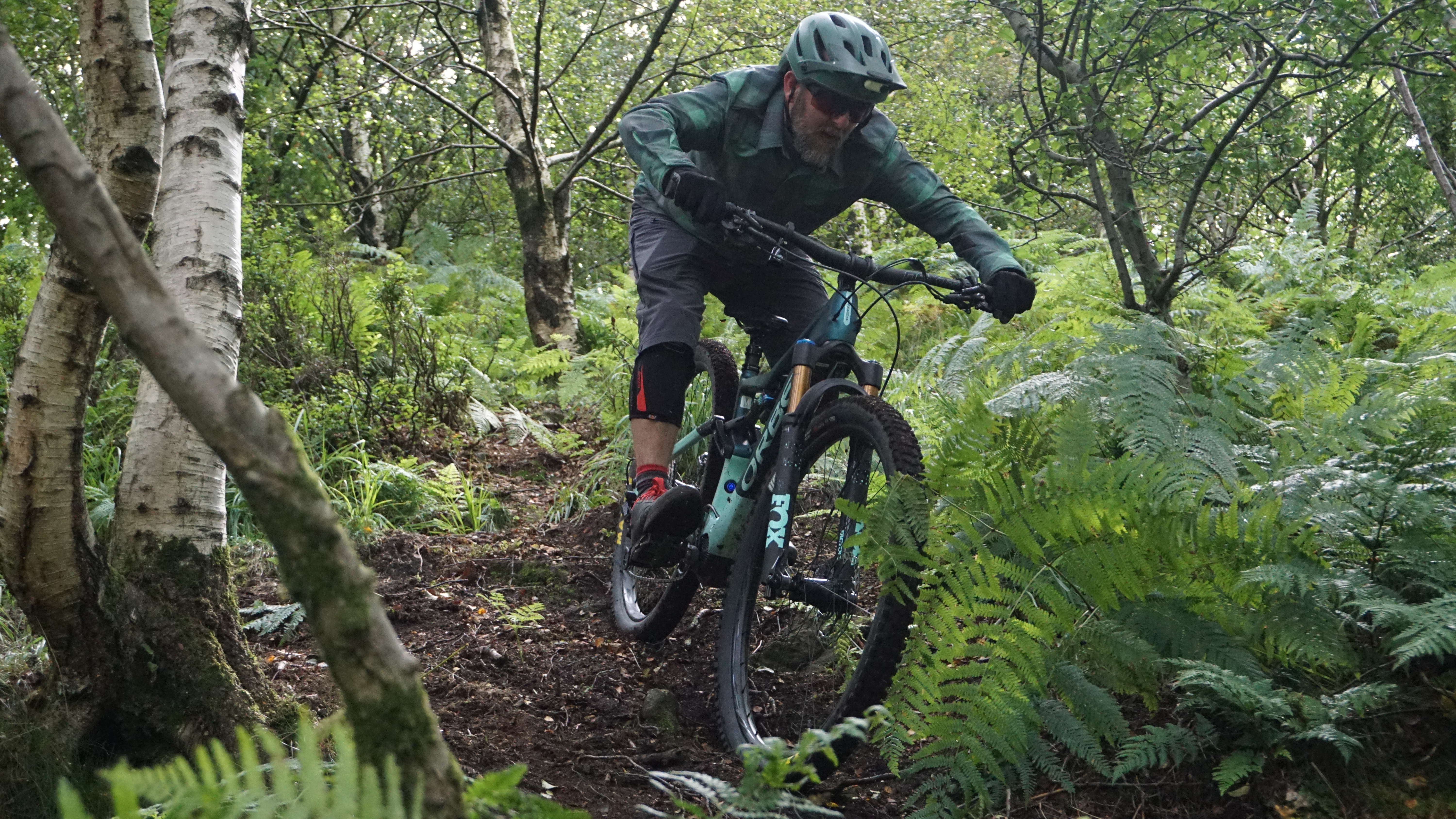
Where to start? I’m going to start with the looks of this bike as I think it’s quite remarkable. I’ve never ridden a full suspension e-MTB that looks more like an acoustic bike than the Rise. The small capacity battery is long and slim rather than short and fat and so the downtube is remarkably unremarkable in its style. Acoustic bikes like the Specialized Carbon Enduro with the SWAT compartment have similar sized downtubes. The EP8 RS motor is full-size and yet it seems to disappear into the moulded frame around the bottom bracket. Just compare it to the area around the BB on the Levo. With no displays around the cockpit it’s easy to mistake this bike for an acoustic bike on first glance.
Then there’s the weight, of which there is surprisingly little. This version of the Rise tips the scales at just under 19kg including pedals. That’s actually within the specifications for loading on my Thule roof rack on my car (20kg maximum bike load). I can just about lift it up there too. On another practical level, just lifting the bike up and over stuff on the trails is pretty easy to do. I still wouldn’t want to do too much hikeabike action with this on my back, but it’s certainly doable.
Apart from the lifting, that lack of mass really does have a positive effect on the ride experience. With the bike in eco mode and just adding enough power to overcome the extra weight you genuinely can briefly forget that you are riding with a motor. On flat trails, and certainly roads, you can easily pedal along with the motor actually off and not find yourself blowing just to keep the bike rolling. That alone goes a long way to reducing any range anxiety you may have – even if you run out of juice the Rise is still a bike you can get home on. If that’s genuinely a concern, though, you can buy an additional bottle battery to give you a total of 612Wh of battery life. Genuinely, I think a 100km range on the right terrain could be within reach with that.
The efficiency of the system and the lack of any real need to use the high energy boost settings means that smaller battery does a very good job of lasting as long as the bigger batteries on bigger bikes, and the fact the EP8 RS motor tops out at a still quite high torque level of 60Nm means you can ride and just about keep up with fellow riders on full-fat motors and batteries. That’s something that is a noticeable issue with low/full fat mixed rides that include a Levo SL bike.
The reach on this medium is 450mm, which may not be super long, but when considered along with the 445mm chain stay length (there’s still a big motor down there) does mean it handles itself well at speed while still being agile enough to feel nippy in the really tight spots between the trees and in the berms. Using the flickable qualities of this bike with a dab of boost out of berms really does give a new sense of excitement to tight singletrack and adds to the feeling of speed (and fake youth).
Latest Stories
The excellent component choices give a sense of high-end quality, as they should on a bike costing £7k, but it has to be said that that’s not a universal truth in the e-MTB market. The XT brakes are, well… they are Shimano XT which is practically a benchmark for quality performance.
It’s perhaps a tad problematic or at least sometimes redundant to comment on the climbing abilities of an e-MTB – stick any e-MTB in trail mode and almost every climb becomes easy. But with the Rise and its reduced power output its climbing abilities are worthy of note. The seat angle comes into play as you find yourself actually using the full range of gears at your fingertips rather than just letting the motor power you upwards. I’ve frequently said that 12-speed on a full fat e-MTB is quite a waste, but with the Rise the motor really is an assist to your natural style of riding and gear choices.
Orbea Rise M10 Overall
In not falling for the hype of ‘more power equals more fun’ they have created a genuine high-performance mountain bike that just happens to have a motor. In terms of energy efficiency and balancing rider input with power and battery capacity the Rise really does hit the sweet spot. With the excellent suspension choices, high-performance groupset spec and natural ride feel, this really could be the bike that leaves your acoustic bike to gather dust.
Lightweight, full-fat, or a mix of the two? This seems to be the next step for e-MTB evolution. We’re fairly sure that full-fat, full-power e-bikes are always going to have a place in the market, people will always want more range and larger batteries, but is there room for lightweight and low-fat?
The Kenevo SL is the headliner in the test. It boasts the lowest weight of all these bikes and has components that match its performance potential. The issue is how do you ride a Kenevo SL with your mates and make it work? If you’re always riding by yourself then we don’t see an issue, but if you frequently ride with your mates then really you all need to have SL bikes with 35Nm max motors.
The Levo doesn’t have such an issue. Its 90Nm of torque is more than a Bosch or Shimano system, but not enough to split up a group ride and, of course, you can always use the app to drop torque when you’re in a group. The Levo takes many of the lessons learned from both Kenevo and Levo SL – you still get an e-bike that is more elegant than some models on the market and appears less like an e-MTB, but you get more power and a significantly larger capacity battery.
This brings us on to the Rise. Orbea has been very smart with the Rise. Instead of having to invest in its own motor, software and application, Orbea has taken an off the shelf Shimano motor and restricted it to 60Nm, which leaves plenty of money in the budget to build a Rise with high-end suspension and components at a much lower price than Specialized. Better still, with almost double the power you can ride with your full-fat e-MTB riding mates and not worry too much about being left behind. The Rise could quite possibly be the Goldilocks of the three bikes. It doesn’t offer the same speed and stability as the Kenevo SL on really aggressive terrain, but its power, low weight and sorted geometry make it a very enjoyable trail e-MTB.
Looking at the e-bikes we have now compared to what was available just five years ago has us excited about the future, but if e-bikes continue to weigh less, and offer more range, will they tempt ever more of us away from standard mountain bikes? Or will we start to see a standard mountain bike and a choice of e-bikes as being just as much a part of the shed as a hardtail and a full susser? Only time will tell.
- Frame: Orbea Rise OMR 2021 140mm travel 29” C-Boost 12×148
- Shock: Fox DPX2 Factory 3-Position Adjust Evol Kashima custom tune 210x55mm
- Fork: Fox 36 Float Factory 150 Grip2 QR15x110 Kashima
- Hubs: Race Face TURBINE-R30 TLR 15/110mm IS
- Rims: Race Face TURBINE-R30 TLR 15/110mm IS
- Tyres: Maxxis Dissector 2.40” 60 TPI 3CMaxxTerra Exo TLR
- Chainset: ethirteen espec Direct Mount 32T Boost
- Rear mech: Shimano XT M8100 SGS Shadow Plus
- Shifters: Shimano XT M8100 I-Spec EV
- Cassette: Shimano CS-M7100 10-51t 12-Spd
- Brakes: Shimano XT M8120 Hydraulic Disc
- Stem: Race Face Aeffect R 35mm
- Bars: Race Face Next R 20mm Rise 780mm
- Grips: Race Face
- Seatpost: OC2 Dropper 31.6mm
- Saddle: Fizik Taiga S-alloy rail
- Motor: Shimano EP8 RS (Custom Tune – 65NM)
- Battery: Orbea RS Internal 360Wh
- Size tested: Medium
- Sizes available: S, M, L, XL
- Weight: 18.92kg/41.7lbs (with pedals)
Story tags

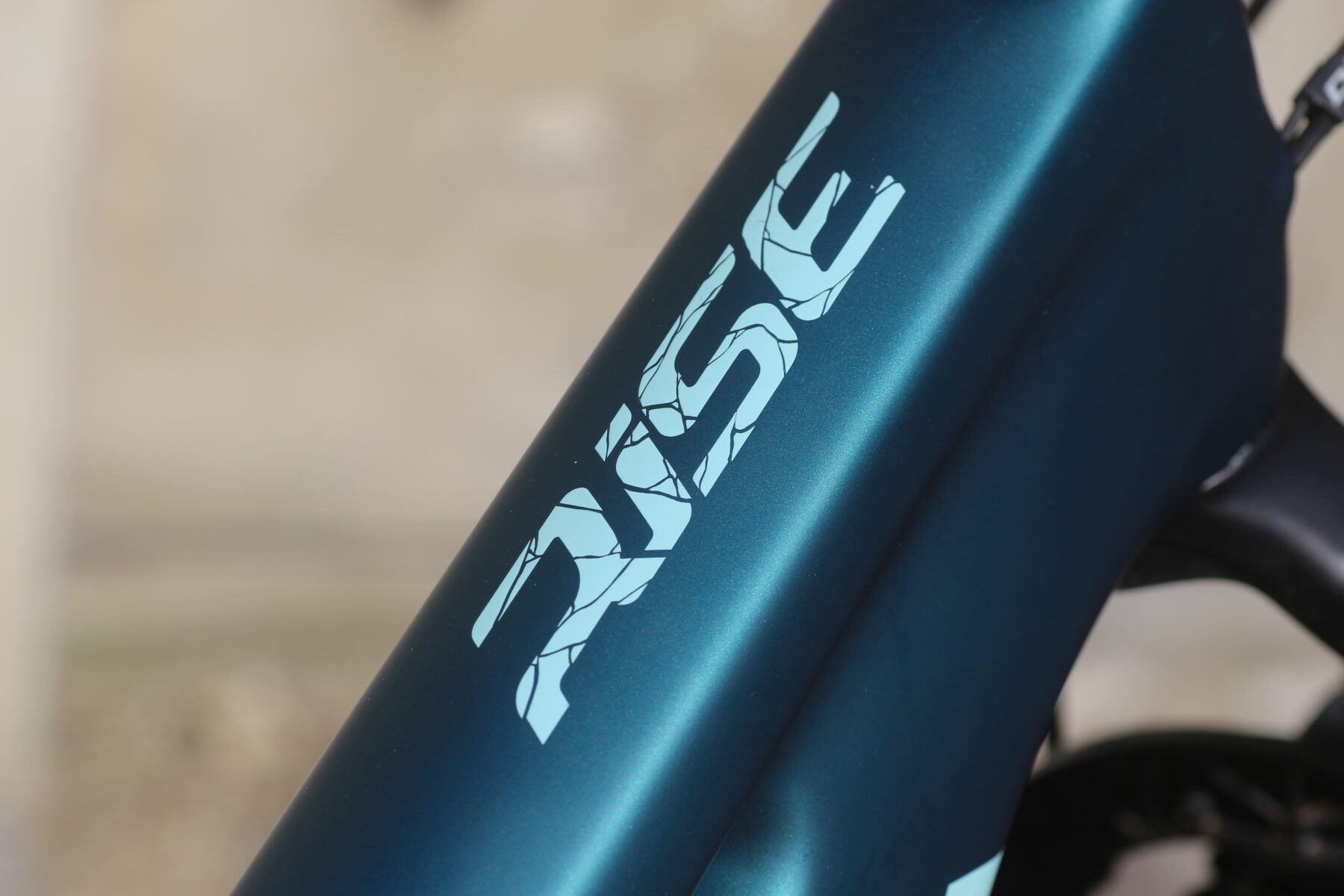






An ebike I would actually consider buying..
The M10 isn’t the cheapest carbon Rise – there’s an m20 model that’s about £1400 less
I love that the downtube on Orbea’s eBikes are thinner than Santa Cruz’s non-eBikes 🙂
I ordered one in Feb last year, excited to be expecting delivery before Feb this year, a sign of the times?
Hope the Hydro series is just as good – I have an H15 on order and rumoured to maybe arrive next month
Had one since December 2020, couldn’t be happier with it.